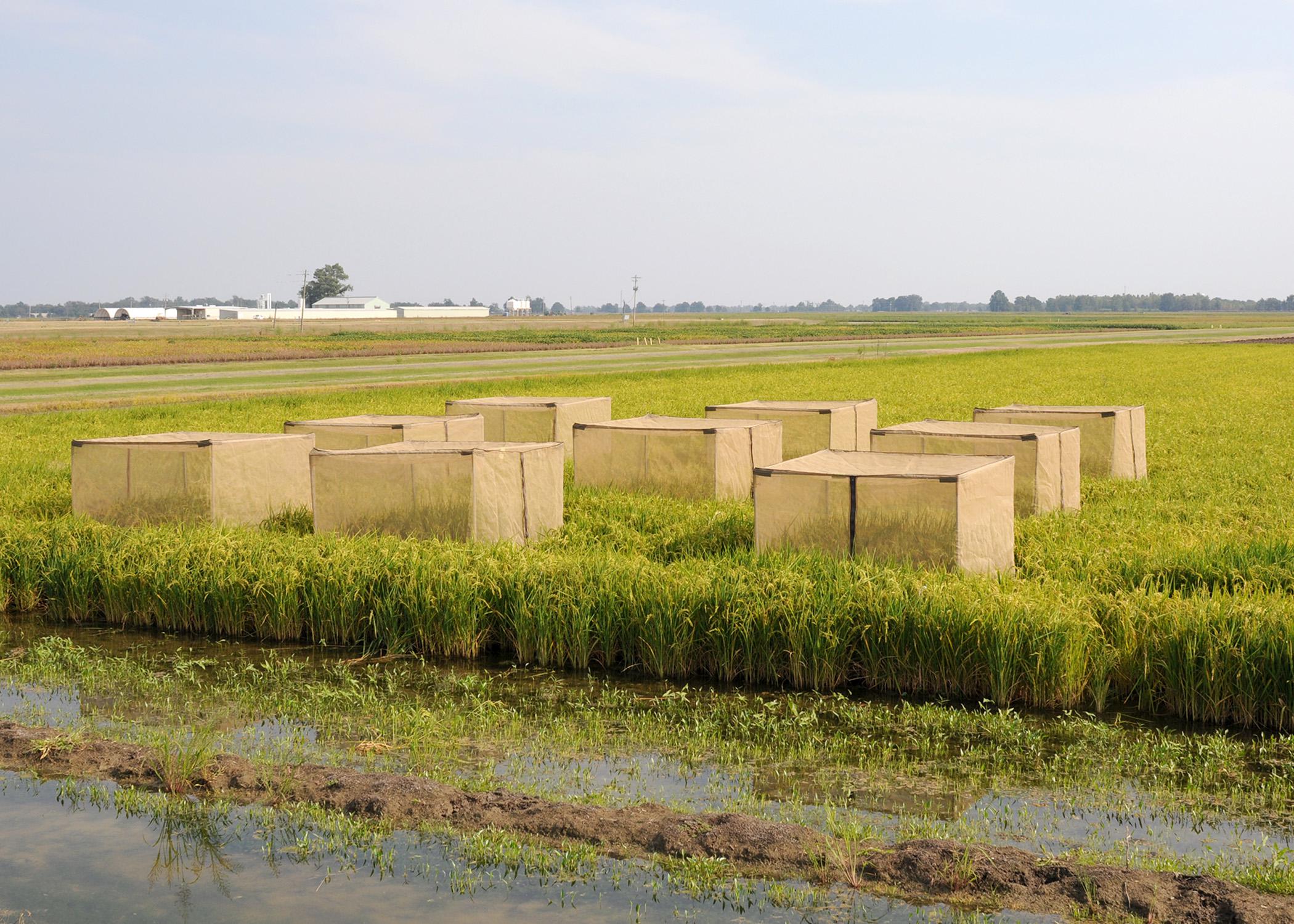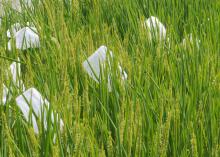Information Possibly Outdated
The information presented on this page was originally released on May 23, 2014. It may not be outdated, but please search our site for more current information. If you plan to quote or reference this information in a publication, please check with the Extension specialist or author before proceeding.
MSU scientists change rice stink bug advice
STONEVILLE -- Mississippi rice producers may need to intensify their treatment of the most important late-season pest in rice based on new recommendations from researchers at the Delta Research and Extension Center.
Jeff Gore is a Mississippi State University Extension Service entomologist at the Stoneville station who conducts research with the Mississippi Agricultural and Forestry Experiment Station. He said past recommendations for rice stink bug treatment were based on a time frame rather than a growth stage.
“The old recommendation is five stink bugs in 10 sweeps during the first two weeks from panicle emergence and 10 stink bugs in 10 sweeps after that,” Gore said. “The new recommendation is treating at two to three stink bugs in 10 sweeps from panicle emergence through soft dough.”
The length of time required for vigilance will vary based on the rice variety planted.
“This is going to be very important in hybrid rice, because an individual hybrid plant produces so many more panicles than conventional varieties that they don’t mature at the same rate,” Gore said. “The period of time the hybrid is susceptible to stink bugs is longer than the conventional variety. That’s why we’ve gone to a grain stage scale instead of a time frame.”
Gore said growers will likely end up treating more than before based on this recommendation, but the positive impact on yield and grain quality is worth the extra investment.
“Pyrethroids are the cheapest option and continue to provide excellent control of rice stink bug in Mississippi,” he said. “Neonicotinoids tend to be more expensive and may not provide additional control.
“Based on these changes to the threshold, we may spray rice more often and later in the season than we used to spray. However, as long as growers adhere to seasonal use limits and preharvest intervals on the label, these additional applications should not provide an added risk to consumers of rice,” he said.
These new recommendations are based on a multi-year research project by George Awuni, a postdoctoral associate at MSU. His doctoral research at MSU focused on the impact of rice stink bugs on grain quality and yield. He also studied the host range and feeding preference, as well as timing and duration of rice stink bug infestations, to see if damage was more critical at any certain growth stage.
“I found that if rice stink bugs are allowed to persist for more than one day on the rice panicle, significant yield losses and damage can occur,” Awuni said. “Based on the existing recommendations, if a crop scout tells a farmer, ‘We have five stink bugs in 10 sweeps,’ and the grower delays treatment, he could have problems.”
Awuni’s research differs from much of that conducted in the past. He used the two traditional methods in conjunction with each other: a sleeve cage to keep the insect on an individual rice panicle, and a large cage over multiple plants in the field.
“With the sleeve cage, the bloom stage was much more vulnerable to the rice stink bug infestation in terms of yield,” Awuni said. “But when you look at grain quality, you also have vulnerability during the milk and soft dough stage.”
The bloom stage is the beginning of grain formation.
“Rice stink bugs cause damage by injecting their needle-like mouth parts into rice kernels at the panicle stage and drawing out all of the watery content from the rice kernels,” Awuni said. “This can produce unfilled kernels, called blanks, which negatively impact yield.”
The stink bugs impact grain quality during the milk and soft dough stages. Quality is reduced by shriveled grain and discoloration, which may take different forms, depending on the duration of the infestation.
“Yield affects the bottom line, while grain quality affects marketability,” Awuni said. “The greatest yield loss is in the bloom stage, but growers still get damage in kernel formation during the milk and soft dough stages. That’s why we now recommend treating for five stink bugs throughout the first three growth stages of rice for the greatest return on the grower’s investment.”
The Mississippi Rice Promotion Board funded Awuni’s research.





